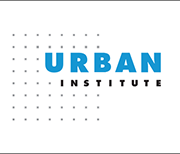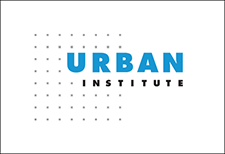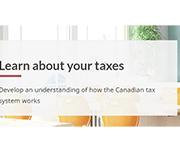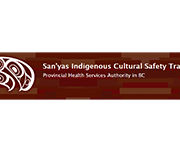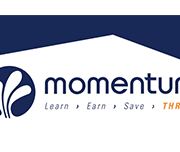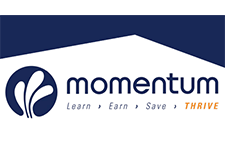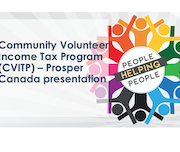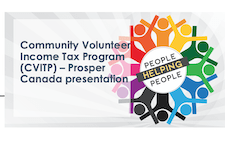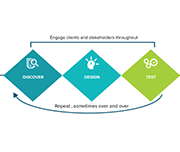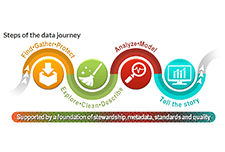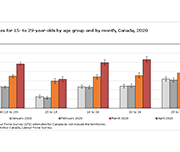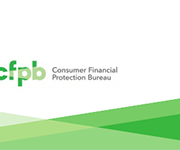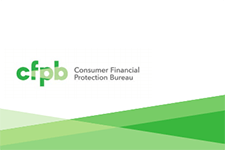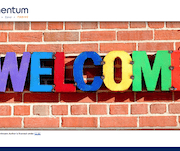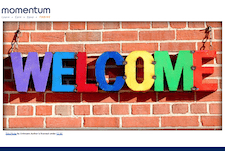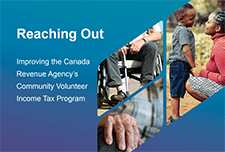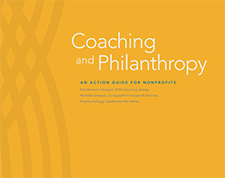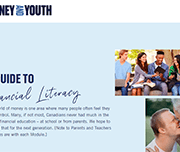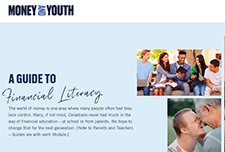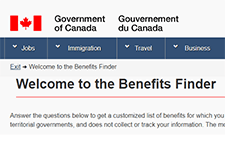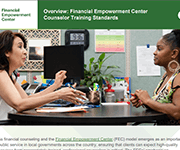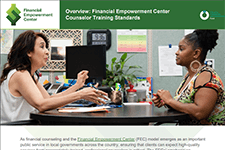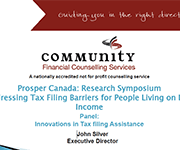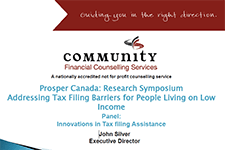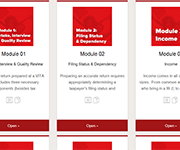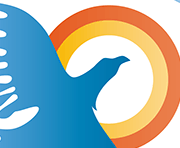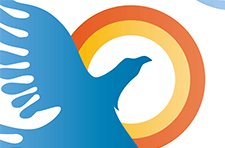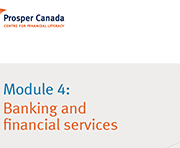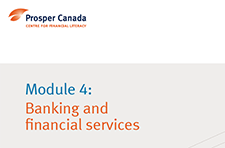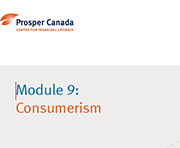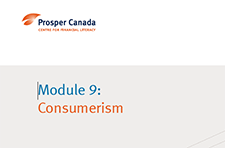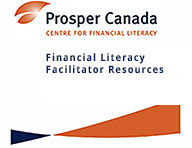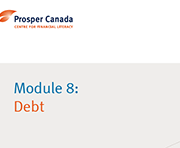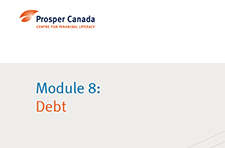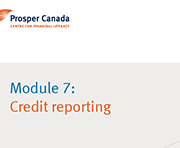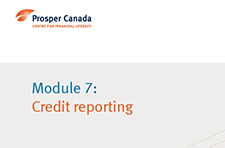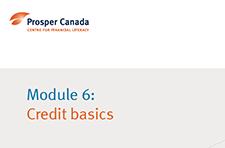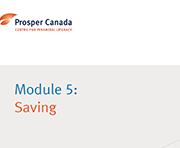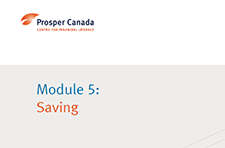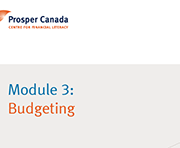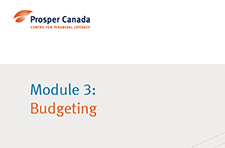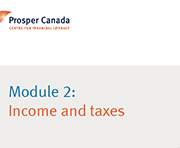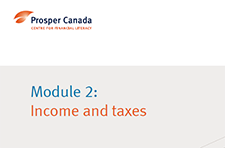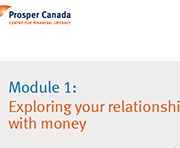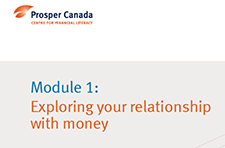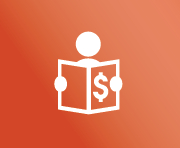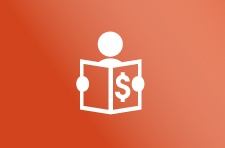Learn about your taxes (free CRA online course)
A free online course to learn about personal income taxes in Canada, developed by the Canada Revenue Agency. Contents include: Additional resources for teachers and facilitators are available.
National Indigenous History Month 2021
In June, we commemorate National Indigenous History Month 2021 to recognize the history, heritage and diversity of First Nations, Inuit and Métis peoples in Canada. The Crow-Indigenous Relations and Northern Affairs Canada website contains resources on Indigenous history, promotional and educational materials, and information on how the Government of Canada is responding to the Truth and Reconciliation Commission's Calls to Action.
Introduction to Indigenous Peoples’ cultures online course
This free, on-demand, introductory course provides learners with insight into the history of First Nations, Métis and Inuit Peoples; an understanding of the devastation of colonialism on Indigenous communities and economies from an Indigenous perspective and how it is critical to reconciliation; and how culturally sensitive health care models help inform how accounting and finance education can be inclusive and supportive. This course was developed to provide the writers and facilitators of CPA education programs, cases and examinations with insight, knowledge and skills to better understand the perspectives of Indigenous students, to help support their success. It will provide all learners with a valuable introduction into the deep cultural and historical foundations upon which the future prosperity of Indigenous communities must be built.
San’yas Indigenous Cultural Safety Training
Cultural safety is about fostering a climate where the unique history of Indigenous peoples is recognized and respected in order to provide appropriate care and services in an equitable and safe way, without discrimination. This website includes information about the San’yas: Indigenous Cultural Safety Training Program delivered by the Provincial Health Services Authority of British Columbia.
Momentum’s Money Management Courses
The money management courses are offered online, on demand, for free. Learn at your own pace and on your own schedule on a variety of topics, including:
Resources
Handouts, slides, and time-stamps
Human Insights Tools & Resources
Human insights are used when designing programs and improving services through understanding clients’ hidden preferences, environment factors and behaviors. The Human Insights Tools from Prosperity Now are intended to take you through the process of discovering opportunities for innovation from clients’ point of view, designing solutions to meet those needs, and testing your ideas to ensure they bring about the needed change. Tools and resources are presented for each of the discover, design, and test phases.
Data literacy training
Statistics Canada presents a learning catalogue to share knowledge on data literacy. Data literacy is the ability to derive meaningful information from data. It focuses on the competencies involved in working with data including the knowledge and skills to read, analyze, interpret, visualize and communicate data as well as understand the use of data in decision-making. Their aim is to provide learners with information on the basic concepts and skills with regard to a range of data literacy topics. The training is aimed at those who are new to data or those who have some experience with data but may need a refresher or want to expand their knowledge.
Impact of the COVID-19 pandemic on the NEET (not in employment, education or training) indicator, March and April 2020
A fact sheet released by Statistics Canada shows that, in March and April 2020, the proportion of young Canadians who were not in employment, education or training (NEET) increased to unprecedented levels. The COVID-19 pandemic—and the public health interventions that were put in place to limit its spread—have affected young people in a number of ways, including high unemployment rates, school closures and education moving online.
Helping Consumers Claim their Economic Impact Payment: A guide for intermediary organizations
The Consumer Financial Protection Bureau (CFPB) released a guide to assist intermediaries in serving individuals to access their Economic Impact Payments (EIPs). The guide, Helping Consumers Claim the Economic Impact Payment: A guide for intermediary organizations , provides step-by-step instructions for frontline staff on how to:
Global Learning Partners: Shareable Resources
Global Learning Partners (GLP) helps individuals and organizations to learn by providing practical expertise in learning assessment, design, facilitation and evaluation. Their shareable resources cover a variety of topics in learning, taking a learning-centered approach, including: Learning Design, Needs Assessment, Facilitation, Evaluation, and others.
Resources
Handouts, slides, and time-stamps
Read the presentation slides for this webinar.
Handouts for this webinar:
Online financial tools and calculators (Prosper Canada)
Virtual tools for participant engagement (Prosper Canada)
Online delivery check-list (Momentum)
Jeopardy game template (SEED)
Time-stamps for the video recording:
3:26 – Agenda and introductions
5:10 – Audience polls
8:19 – Virtual delivery considerations (Speaker: Glenna Harris, Prosper Canada)
12:39 – Virtual workshops best practices (Speaker: Fatima Esmail, Momentum)
33:12 – Online money management training (Speaker: Millie Acuna, SEED)
49:07 – Q&A
Reaching Out: Improving the Canada Revenue Agency’s Community Volunteer Income Tax Program
The position of Taxpayers’ Ombudsman (the Ombudsman) was created to support the government priorities of stronger democratic institutions, increased transparency within institutions, and fair treatment. As an independent and impartial officer, the Ombudsman handles complaints about the service of the Canada Revenue Agency (CRA). The Office of the Taxpayers’ Ombudsman hears first-hand the concerns of individuals, tax practitioners, and community support organizations. The Ombudsman visited with Community Volunteer Income Tax Program (CVITP) partner organizations, volunteers, and the Canada Revenue Agency’s (CRA) CVITP coordinators to learn more about the program and to understand the success stories and challenges they all experience. This report gives voice to what they have heard and provides recommendations on how to address the issues raised.
Coaching and Philanthropy: An Action Guide for Nonprofits
The Coaching and Philanthropy Project was created by CompassPoint in collaboration with Grantmakers for Effective Organizations, BTW informing change and Leadership. This guide uses the data collected during the project to answer a few questions including: What is coaching? How can coaching contribute to my development as a nonprofit leader? What kind of coaching is right for me and my organization? How much is coaching? to assess and advance coaching as a strategy for building effective nonprofit organizations.
Money and Youth
The Canadian Foundation for Economic Education (CFEE) works collaboratively with funding partners, departments of education, school boards, schools, educators, and teacher associations to develop and provide free, non-commercial programs and resources for teachers and students – developed and reviewed by educators. The online version of their curriculum Money and Youth is organized into separate modules so that users can select individual topics that align with interests. An introduction to the topic, a teachers guide containing lesson plans, and parent resources are included within each module.
Overview: Financial Empowerment Center Counselor Training Standards
This overview summarizes the Financial Empowerment Center (FEC) model’s Counselor Training Standards. The Standards delineate the breadth and depth of the financial content areas, counseling and coaching skills, practice and experiential learning, and socio-economic and cultural context setting necessary to serve the diverse needs and backgrounds of FEC clients. The Standards also include a Code of Ethics that promotes responsible, professional and ethical financial counseling, furthering the profession of one on-one financial counseling.
Scaling tax filing assistance
In this presentation, John Silver, Executive Director, Community Financial Counselling Service (CFCS), Winnipeg, shares insights from the low income tax program at CFCS. This program files almost 10,000 returns each year, and also provides tax clinic support to other agencies and delivers detailed training for tax clinic volunteers. This presentation is from the session 'Innovations in tax filing assistance', at the tax research symposium hosted by Prosper Canada and Intuit, February 7, 2019, in Ottawa.
Activity sheet 4-10: Goals (Banking and financial services)
This activity sheet is from Module 4 of the Prosper Canada Financial Literacy Facilitator resources. Take a few minutes to how this workshop relates to your life, and set one or two goals for your use of banks and other financial services. To view the full Financial Literacy Facilitator resources, click here.
Handout 9-12: Consumerism resources
This is the resources handout for Module 9: Consumerism, from the Prosper Canada Financial Literacy Facilitator Resources. To view full Financial Literacy Facilitator Resources, click here.
Family-Centred Coaching Toolkit
This is a set of tools and resources developed by The Prosperity Agenda to implement a holistic vision of financial coaching for individuals and families. (Note: Accessing the toolkit requires submitting user information).
Handout 9-13: Consumerism glossary
This handout is from Module 9 of the Financial Literacy Facilitator Resources. Glossary of terms relating to consumerism. To view full Financial Literacy Facilitator Resources, click here.
Handout 9-8: Dealing with consumer problems
This handout is from Module 9 of the Financial Literacy Facilitator Resources. Examples of how to deal with consumer problems. To view full Financial Literacy Facilitator Resources, click here.
Handout 9-7: Common frauds and scams
This handout is from Module 9 of the Financial Literacy Facilitator Resources. Common consumer frauds and scams to look out for. To view full Financial Literacy Facilitator Resources, click here.
Handout 9-5: Cell phone information
This handout is from Module 9 of the Financial Literacy Facilitator Resources. Information about cell phone plans and what is involved when you purchase one. To view full Financial Literacy Facilitator Resources, click here.
Handout 9-3: Smart shopping tips
This handout is from Module 9 of the Financial Literacy Facilitator Resources. Smart shopping tips. To view full Financial Literacy Facilitator Resources, click here.
Handout 9-2: Advertising techniques and sales tactics
This handout is from Module 9 of the Financial Literacy Facilitator Resources. Explanation of different advertising and sales techniques. To view full Financial Literacy Facilitator Resources, click here.
Activity sheet 9-11: Consumerism goal setting
This activity sheet is from Module 9 of the Financial Literacy Facilitator Resources. Setting goals related to consumerism. To view full Financial Literacy Facilitator Resources, click here.
Activity sheet 9-10: Rate your financial knowledge, part 2
This activity sheet is from Module 9 of the Financial Literacy Facilitator Resources. Use this quiz to rate your financial knowledge. To view full Financial Literacy Facilitator Resources, click here.
Activity sheet 9-9: Complaint letter
This activity sheet is from Module 9 of the Financial Literacy Facilitator Resources. A template for writing a consumer complaint letter. To view full Financial Literacy Facilitator Resources, click here.
Activity sheet 9-6: Cell phone checklist
This activity sheet is from Module 9 of the Financial Literacy Facilitator Resources. A checklist of questions to answer when you are getting a cell phone. To view full Financial Literacy Facilitator Resources, click here.
Activity sheet 9-4: Find the better deal
This activity sheet is from Module 9 of the Financial Literacy Facilitator Resources. Figure out which item is the better deal by calculating the unit cost. To view full Financial Literacy Facilitator Resources, click here.
Activity sheet 9-1: Consumer quiz
This activity sheet is from Module 9 of the Financial Literacy Facilitator Resources. What kind of consumer are you? Take the quiz. To view full Financial Literacy Facilitator Resources, click here.
Handout 8-10: Debt glossary
This handout is from Module 8 of the Financial Literacy Facilitator Resources. Glossary of terms about debt. To view full Financial Literacy Facilitator Resources, click here.
Handout 8-9: Debt resources
This handout is from Module 8 of the Financial Literacy Facilitator Resources. Web resources about debt in Canada. To view full Financial Literacy Facilitator Resources, click here.
Handout 8-6: Collection rules
This handout is from Module 8 of the Financial Literacy Facilitator Resources. Debt collection rights and what a collection agency has the right to do and not to do. To view full Financial Literacy Facilitator Resources, click here.
Handout 8-5: Dealing with creditors
This handout is from Module 8 of the Financial Literacy Facilitator Resources. Tips for dealing with creditors over the phone or by mail, or for creating a debt repayment plan. To view full Financial Literacy Facilitator Resources, click here.
Handout 8-4: Steps to debt repayment
This activity sheet is from Module 8 of the Financial Literacy Facilitator Resources. Steps for debt repayment. To view full Financial Literacy Facilitator Resources, click here.
Activity sheet 8-8: Goal setting
This activity sheet is from Module 8 of the Financial Literacy Facilitator Resources. Goal setting for debt. To view full Financial Literacy Facilitator Resources, click here.
Activity sheet 8-7: Debt collection role play
This activity sheet is from Module 8 of the Financial Literacy Facilitator Resources. Role play activity about debt collection. To view full Financial Literacy Facilitator Resources, click here.
Activity Sheet 8-3: Ladder of debt repayment options
This activity sheet is from Module 8 of the Financial Literacy Facilitator Resources. Print these pages and cut into individual ‘rungs’ for use in the activity. To view full Financial Literacy Facilitator Resources, click here.
Activity sheet 8-2: Debt do’s and don’ts
This activity sheet is from Module 8 of the Financial Literacy Facilitator Resources. Group activity to talk about debt do's and don'ts. To view full Financial Literacy Facilitator Resources, click here.
Activity sheet 8-1: How much is TOO much?
This activity sheet is from Module 8 of the Financial Literacy Facilitator Resources. How much debt is too much debt? Consider the 20/10 rule. To view full Financial Literacy Facilitator Resources, click here.
Handout 7-13: Credit reporting glossary
This handout is from Module 7 of the Financial Literacy Facilitator Resources. Glossary of terms for credit reporting. To view full Financial Literacy Facilitator Resources, click here.
Handout 7-12: Credit reporting resources
This handout is from Module 7 of the Financial Literacy Facilitator Resources. Web resources for credit reporting in Canada. To view full Financial Literacy Facilitator Resources, click here.
Handout 7-10: Ways to improve your credit score
This handout is from Module 7 of the Financial Literacy Facilitator Resources. Ways to improve your credit score. To view full Financial Literacy Facilitator Resources, click here.
Handout 7-8: Correcting common errors on credit reports
This handout is from Module 7 of the Financial Literacy Facilitator Resources. How to correct common errors on credit reports. To view full Financial Literacy Facilitator Resources, click here.
Handout 7-5: Credit scores
This handout is from Module 7 of the Financial Literacy Facilitator Resources. A credit score is a score between 300 and 900 that credit bureaus use to rate the information in your credit report. Credit bureaus use a mathematical formula based on many factors to arrive at your credit score. To view full Financial Literacy Facilitator Resources, click here.
Handout 7-4: Reading a credit report
This handout is from Module 7 of the Financial Literacy Facilitator Resources. The information in an Equifax credit report varies slightly from a TransUnion credit report, but both contain the same basic sections. To view full Financial Literacy Facilitator Resources, click here.
Handout 7-3: Sample Equifax credit report
This handout is from Module 7 of the Financial Literacy Facilitator Resources. A sample of a credit report received from Equifax. To view full Financial Literacy Facilitator Resources, click here.
Handout 7-2: Credit reports
This handout is from Module 7 of the Financial Literacy Facilitator Resources. Credit bureaus summarize your credit use in a report. The credit report is one of the main things lenders look at when they decide whether or not to give you credit. A credit report contains your history of credit use, and your credit ratings. To view full Financial Literacy Facilitator Resources, click here.
Handout 7-1: Credit bureaus
This handout is from Module 7 of the Financial Literacy Facilitator Resources. Credit bureaus are agencies that collect information about how we use credit. They produce personal credit reports. Credit bureaus are private companies. They are regulated by the province, but they are not part of the government. To view full Financial Literacy Facilitator Resources, click here.
Activity sheet 7-11: Goal setting and credit reports
This activity sheet is from Module 7 of the Financial Literacy Facilitator Resources. Practice setting goals related to credit reports. To view full Financial Literacy Facilitator Resources, click here.
Activity sheet 7-9: Credit score scenarios
This activity sheet is from Module 7 of the Financial Literacy Facilitator Resources. Credit score scenarios to practice learning. To view full Financial Literacy Facilitator Resources, click here.
Activity sheet 7-7: TransUnion sample request form
This activity sheet is from Module 7 of the Financial Literacy Facilitator Resources. A sample of the TransUnion request sheet to obtain a free credit report. To view full Financial Literacy Facilitator Resources, click here.
Activity sheet 7-6: Sample Equifax request sheet
This activity sheet is from Module 7 of the Financial Literacy Facilitator Resources. A sample of the Equifax request sheet to obtain a free credit report. To view full Financial Literacy Facilitator Resources, click here.
Handout 6-7: Credit glossary
This handout is from Module 6 of the Financial Literacy Facilitator Resources. Glossary of terms related to credit. To view full Financial Literacy Facilitator Resources, click here.
Handout 6-6: Credit resources
This handout is from Module 6 of the Financial Literacy Facilitator Resources. Web resources for credit and credit cards. To view full Financial Literacy Facilitator Resources, click here.
Handout 6-4: Managing credit
This handout is from Module 6 of the Financial Literacy Facilitator Resources. Tips for managing credit. To view full Financial Literacy Facilitator Resources, click here.
Handout 6-3: The cost of credit
This handout is from Module 6 of the Financial Literacy facilitator curriculum. The cost of credit for different payment methods.
Handout 6-2: Credit card features
This handout is from Module 6 of the Financial Literacy Facilitator Resources. The features of credit cards and what they mean. To view full Financial Literacy Facilitator Resources, click here.
Handout 6-1: Types of credit
This handout is from Module 6 of the Financial Literacy Facilitator Resources. The different types of credit and their lending conditions. To view full Financial Literacy Facilitator Resources, click here.
Activity sheet 6-5: Goal setting and credit
This activity sheet is from Module 6 of the Financial Literacy Facilitator Resources. Practice setting goals related to credit. To view full Financial Literacy Facilitator Resources, click here.
Handout 5-10: Saving resources
This handout is from Module 5 of the Financial Literacy Facilitator Resources. Website resource list for saving. To view full Financial Literacy Facilitator Resources, click here.
Handout 5-6: Savings tools (basic)
This handout is from Module 5 of the Financial Literacy facilitator curriculum. Basic description of savings accounts and financial products available in Canada. To view full Financial Literacy facilitator curriculum, click here.
Handout 5-11: Glossary for saving module
This handout is from Module 5 of the Financial Literacy Facilitator Resources. Glossary of savings terms. To view full Financial Literacy Facilitator Resources, click here.
Handout 5-7: Savings tools (detailed)
This handout is from Module 5 of the Financial Literacy Facilitator Resources. Explains details about different kinds of savings accounts and financial products typically available in Canada. To view fill Financial Literacy Facilitator Resources, click here.
Handout 5-4: Compound interest
This handout is from Module 5 of the Financial Literacy Facilitator Resources. Explains compound interest. To view full Financial Literacy Facilitator Resources, click here.
Activity sheet 5-9: Goal setting for saving
This activity sheet is from Module 5 of the Financial Literacy Facilitator Resources. Review the activities you did early in this session to help you get ideas about savings goals. Also, think about other goals you can set, like doing more research or making an appointment with a financial advisor. To view full Financial Literacy Facilitator Resources, click here.
Activity sheet 5-8: Savings tools quiz
This activity sheet is from Module 5 of the Financial Literacy Facilitator Resources. Savings tools quiz. To view full Financial Literacy Facilitator Resources, click here.
Activity sheet 5-5: Christine and Aparna
This activity sheet is from Module 5 of the Financial Literacy Facilitator Resources. Saving scenario with Christine and Aparna. To view full Financial Literacy Facilitator Resources, click here.
Activity sheet 5-3: Finding money
This activity sheet is from Module 5 of the Financial Literacy Facilitator Resources. Use this chart to list some of the things that you buy a lot. Note how often you buy them in a month. Put down how much they usually cost (“average price”). Then figure out how much you spend on them in a month. To view full Financial Literacy Facilitator Resources, click here.
Activity sheet 5-2: Needs and wants
This activity sheet is from Module 5 of the Financial Literacy Facilitator Resources. List some of the things you have spent money on in the last two weeks. Which items are needs and which are wants? To view full Financial Literacy Facilitator Resources, click here.
Activity sheet 5-1: Setting savings goals
This activity sheet is from Module 5 of the Financial Literacy Facilitator Resources. Steps to setting a savings goal. To view full Financial Literacy Facilitator Resources, click here.
Handout 4-12: Glossary for banking and financial services
This handout is from Module 4 of the Financial Literacy Facilitator Resources. Glossary for banking and financial services. To view full Financial Literacy Facilitator Resources, click here.
Handout 4-11: Banking and financial services resources
This handout is from Module 4 of the Financial Literacy Facilitator Resources. Resource list of websites about banking and financial services. To view full Financial Literacy Facilitator Resources, click here.
Handout 4-8: Alternative financial services
This handout is from Module 4 of the Financial Literacy Facilitator Resources. Alternative financial services are outside of the traditional, regulated banking system. They do not take deposits like a bank or credit union. To view full Financial Literacy Facilitator Resources, click here.
Handout 4-7: What are my rights?
This handout is from Module 4 of the Financial Literacy Facilitator Resources. What are your rights when opening a bank account in Canada? To view full Financial Literacy Facilitator Resources, click here.
Handout 4-6: Opening a bank account
This handout is from Module 4 of the Financial Literacy Facilitator Resources. How to open a bank account in Canada. To view full Financial Literacy Facilitator Resources, click here.
Handout 4-4: Bank accounts and services
This handout is from Module 4 of the Financial Literacy Facilitator Resources. The different kinds of bank accounts and services available. in Canada. To view full Financial Literacy Facilitator Resources, click here.
Handout 4-5: Choosing a bank and choosing an account
This handout is from Module 4 of the Financial Literacy Facilitator Resources. Choosing a bank and choosing an account based on your banking needs. To view full Financial Literacy Facilitator Resources, click here.
Handout 4-2: Deposit insurance at credit unions
This handout is from Module 4 of the Financial Literacy Facilitator Resources. Deposit insurance amounts from credit unions in different provinces. To view full Financial Literacy Facilitator Resource, click here.
Handout 4-1: Banks and credit unions
This handout is from Module 4 of the Financial Literacy Facilitator Resources. Banks and credit unions are places where you can safely deposit your money, cash your cheques, pay your bills, ask for a loan or credit card and use a variety of saving and investment tools. This chart explains the differences between banks and credit unions. To view full Financial Literacy Facilitator Resources, click here.
Activity sheet 4-9: Comparing alternative financial services to banking services
This activity sheet is from Module 4 of the Financial Literacy Facilitator Resources. Why use alternative financial services? Why use banking services? List the reasons for using the services that your group was assigned. To view full Financial Literacy Facilitator Resources, click here.
Activity sheet 4-3: Banks and banking services quiz
This activity sheet is from Module 4 of the Financial Literacy Facilitator Resources. Banks and banking services quiz: In pairs, match the items in column A to column B. To view full Financial Literacy Facilitator Resources, click here.
Handout 3-12: Budgeting glossary
This handout is from Module 3 of the Financial Literacy Facilitator Resources. Glossary of budgeting terms. To view full Financial Literacy Facilitator Resources, click here.
Handout 3-11: Resources – Money management websites
This activity sheet is from Module 3 of the Financial Literacy Facilitator Resources. Resource websites for money management. To view full Financial Literacy Facilitator Resources, click here.
Handout 3-9: Financial record keeping
This activity sheet is from Module 3 of the Financial Literacy Facilitator Resources. Here are some important papers and records. You should keep them in a safe place and organize them so that you can find what you need. The chart shows their “shelf life” – how long you should keep them. To view full Financial Literacy Facilitator Resources, click here.
Handout 3-8: Budgeting tips
This activity sheet is from Module 3 of the Financial Literacy Facilitator Resources. Different types of budgeting tips to help you stay on track. To view full Financial Literacy Facilitator Resources, click here.
Activity sheet 3-10: Goal setting
This activity sheet is from Module 3 of the Financial Literacy Facilitator Resources. Take a few minutes to reflect on how this workshop relates to your life. Set one or two SMART goals for your personal budgeting and financial record-keeping. To view full Financial Literacy Facilitator Resources, click here.
Activity sheet 3-6: Making your own budget
This activity sheet is from Module 3 of the Financial Literacy facilitator curriculum. Steps involved in making your own budget. To view full Financial Literacy Facilitator Resources, click here
Activity sheet 3-4: Budgeting scenarios
This activity sheet is from Module 3 of the Financial Literacy facilitator curriculum. Using the Monthly Budget Worksheet, put together a budget for the person in your scenario. Feel free to make up more details. You can also change or add categories to the budget to match your person’s situation. To view full Financial Literacy Facilitator Resources, click here.
Activity sheet 3-3: Budgeting expense categories
This activity sheet is from Module 3 of the Financial Literacy Facilitator Resources. Tracking your different categories of expenses. To view full Financial Literacy Facilitator Resources, click here.
Activity sheet 3-2: Income sources
This activity sheet is from Module 3 of the Financial Literacy Facilitator Resources. Tracking your income sources. To view full Financial Literacy Facilitator Resources, click here.
Activity sheet 3-1: The ‘B’ word – budget
This activity sheet is from Module 3 of the Financial Literacy Facilitator Resources. What do you think about when you hear the word “budget’? To view full Financial Literacy Facilitator Resources, click here.
What words or feelings come to mind?
Handout 2-8: Glossary
This activity sheet is from Module 2 of the Financial Literacy Facilitator Resources from Prosper Canada. Glossary for income and taxes module. To view full Financial Literacy Facilitator Resources, click here.
Handout 2-7: Resources
This activity sheet is from Module 2 of the Financial Literacy Facilitator Resources from Prosper Canada. Resource list for income and taxes module. To view full Financial Literacy Facilitator Resources, click here.
Activity sheet 2-6: Income and taxes
This activity sheet is from Module 2 of the Financial Literacy Facilitator Resources from Prosper Canada. Goal setting for filing your income taxes. To view full Financial Literacy Facilitator Resources, click here.
Handout 2-4: Filing your taxes
This handout is from Module 2 of the Financial Literacy Facilitator Resources from Prosper Canada. How to file your taxes. To view full Financial Literacy Facilitator Resources, click here.
Handout 2-3: Reading a pay stub
This handout is from Module 2 of the Financial Literacy Facilitator Resources from Prosper Canada. How to read a pay stub. To view full Financial Literacy Facilitator Resources, click here.
Activity sheet 2-2: Reading David’s pay stub (quiz)
This activity sheet is from Module 2 of the Financial Literacy Facilitator Resources from Prosper Canada. Reading David's pay stub - a quiz. To view full Financial Literacy Facilitator Resources, click here.
Activity sheet 2-5: Maria and Fernando’s story
This activity sheet is from Module 2 of the Financial Literacy Facilitator Resources from Prosper Canada. Maria and her husband Fernando worked together cleaning a big office building at night. They were hired by a man who ran a large cleaning company. They each got a paycheque twice a month. In February, it was time to do income tax for their previous year’s income. To view full Financial Literacy Facilitator Resources, click here.
Managing your money #7: Preparing for tax filing
Even if you make no money, you should file a tax return each year. You may be eligible for a refund (money back). Filing your taxes triggers access to government benefits that you can’t get any other way. This worksheet will help you gather the information you will need at tax time. You will need a file folder, an envelope, or a small box to put all of your paperwork in. This is worksheet #7 from the booklet 'Managing your money'.
Managing your money #6: Setting a savings goal
Setting a savings goal means that you have decided how much money you can put away, and what you are going to save for. This activity can help you write down some money goals and when you would like to achieve them. You can build savings by putting aside small amounts on a regular basis. This is worksheet #6 from the booklet 'Managing your money'.
Managing your money #5: Monthly budgeting
When you make a budget, you give yourself a clear picture of your financial situation. A budget compares your income to your expenses, all in one place. This is worksheet #5 from the booklet 'Managing your money'.
Managing your money #4: Tracking your bills
Knowing what bills you have and when they are due can help you plan your spending. This activity will help you to be aware of two things: how much you owe each month, and at what time of the month that money is due. This will help you to pay bills on time, and avoid late fees. This is worksheet #4 from the booklet 'Managing your money.'
Managing your Money #3: Tracking your spending
Keeping track of where your money goes during the month is another helpful step towards making a budget. Then you will be able to compare your spending with your income. This is worksheet #3 from the booklet 'Managing your money.'
Managing your money #2: Tracking your regular income
Income is the money that comes into your household. This worksheet will help you see the ‘big picture’ of your income and other resources. Then you can think about how to plan your expenses. This is worksheet #2 from the booklet 'Managing your money.'
English
Module 1: Exploring your relationship with money
Module 2: Income and taxes
Handout 2-1 Government benefits
Activity Sheet 2-2 Reading David’s pay stub quiz
Handout 2-3 Reading a pay stub
Handout 2-4 Filing your taxes
Activity Sheet 2-5 Maria and Fernandos story
Activity Sheet 2-6 Goal-setting
Handout 2-7 Resources
Handout 2-8 Glossary
Video: Tax Deductions Credits and Benefits (video transcript) *NEW*
Module 3: Budgeting
Activity Sheet 3-1 The “B” word-budget
Activity Sheet 3-2 Income sources
Activity Sheet 3-3 Expense categories
Activity Sheet 3-4 Budgeting scenarios
Activity Sheet 3-5 Monthly budget worksheet
Activity Sheet 3-6 Making your own budget
Handout 3-7 Budgeting strategies
Handout 3-8 Budgeting tips
Handout 3-9 Financial record keeping
Activity Sheet 3-10 Goal-setting
Handout 3-11 Resources
Handout 3-12 Glossary
Module 4: Banking and financial services
Handout 4-1 Banks and credit unions
Handout 4-2 Deposit insurance at credit unions in different provinces
Activity Sheet 4-3 Banks and banking services quiz
Handout 4-4 Banks accounts and services
Handout 4-5 Choosing a bank and choosing an account
Handout 4-6 Opening a bank account
Handout 4-7 What are my rights?
Handout 4-8 Alternative financial services
Activity Sheet 4-9 Comparing alternative financial services to banking services
Activity Sheet 4-10 Goal-setting
Handout 4-11 Resources
Handout 4-12 Glossary
Getting government payments by direct deposit
Module 5: Saving
Activity Sheet 5-1 Setting savings goals
Activity Sheet 5-2 Needs and wants
Activity Sheet 5-3 Finding money
Handout 5-4 Compound interest
Activity Sheet 5-5 Enzo and Tess
Handout 5-6 Introduction to saving and investing
Handout 5-7 Saving and investing tools (basic)
Handout 5-8 Saving and investing tools (detailed)
Handout 5-9 Preparing for old age
Handout 5-10 Saving and investment support
Activity Sheet 5-11 Goal-setting
Handout 5-12 Resources
Handout 5-13 Glossary
Interest rates and how they impact your finances, CIRO
Module 7: Credit reporting
Handout 7-1 Credit bureaus
Handout 7-2 Credit reports
Handout 7-3 Sample Equifax credit report
Handout 7-4 Reading a credit report
Handout 7-5 Credit scores
Activity Sheet 7-6 Equifax credit report request form
Activity Sheet 7-7 TransUnion credit report request form
Handout 7-8 Correcting common errors on credit reports
Activity Sheet 7-9 Credit score scenarios
Handout 7-10 Ways to improve your credit score
Activity Sheet 7-11 Goal-setting
Handout 7-12 Resources
Handout 7-13 Glossary
Module 8: Debt
Activity Sheet 8-1 How much is TOO much
Activity Sheet 8-2 Debt do’s and don’ts
Activity Sheet 8-3 Ladder of debt repayment options
Handout 8-4 Steps to debt repayment
Handout 8-5 Dealing with creditors
Handout 8-6 Collection rules
Activity Sheet 8-7 Collection role play
Activity Sheet 8-8 Goal-setting
Handout 8-9 Resources
Handout 8-10 Glossary
Video: Debt Solutions (video transcript)*NEW*
Module 9: Consumerism
Activity Sheet 9-1 Consumer quiz
Handout 9-2 Advertising techniques and sales tactics
Handout 9-3 Smart shopping tips
Activity Sheet 9-4 Find a better deal
Handout 9-5 Cell phone information
Activity Sheet 9-6 Cell phone checklist
Handout 9-7 Common types of frauds and scams
Handout 9-8 Tips to protect yourself from fraud and scams
Handout 9-9 Dealing with consumer problems
Handout 9-10 Complaint letter
Handout 9-11 Making a complaint about an investment
Activity Sheet 9-12 Rate your financial knowledge part 2
Activity Sheet 9-13 Goal setting
Handout 9-14 Resources
Handout 9-15 Glossary
CERB and other COVID-19 scams
Protect yourself against fraud during COVID-19
Types of fraud
Fraud prevention month
The many faces of elder abuse
French
Module 1 : Explorer votre relation avec l’argent
Feuille d’activité 1-1 « Trouvez quelqu’un qui… »
Feuille d’activité 1-2 « L’argent c’est… »
Feuille d’activité 1-3 Messages relatifs à l’argent
Feuille d’activité 1-4 Imaginez un peu
Feuille d’activité 1-5 Évaluer vos connaissances financières
Feuille d’activité 1-6 Comment établir des objectifs INTELLLIGENTS
Feuille d’activité 1-7 Établissement d’objectifs
Module 2 : Revenus et impôts
Document 2-1 Prestations gouvernementales
Feuille d’activité 2-2 « Lire le relevé de paie de Jeanne (questionnaire) »
Document 2-2 Lire un relevé de paie
Document 2-3 La déclaration de revenus
Feuille d’activité 2-4 « Le cas de Maria et Fernando »
Feuille d’activité 2-5 « Établissement d’objectifs »
Document 2-6 Ressource
Document 2-7 Glossaire
Déductions, crédits d’impôt et avantages fiscaux – Transcription de la vidéo **NOUVEAU**
Module 3 : L’établissement d’un budget
Feuille d’activité 3-1 Le mot qui commence par un « B » – budget
Feuille d’activité 3-2 Sources de revenus
Feuille d’activité 3-3 Catégories de dépenses
Feuille d’activité 3-4 Scénarios de budget
Feuille d’activité 3-5 feuille de travail pour le budget mensuel
Feuille d’activité 3-6 feuille de travail pour le budget mensuel
Document 3-7 Les stratégies budgétaires
Document 3-8 Conseils budgétaires
Document 3-9 Tenue des dossiers financiers
Feuille d’activité 3-10 Établissement d’objectifs
Document 3-11 Ressources
Document 3-12 Glossaire
Module 4 : Services bancaires et financiers
Document 4-1 Banques et caisses populaires ou coopératives de crédit
Document 4-2 Assurance-dépôts dans les caisses populaires ou coopératives de crédit selon les provinces.
Feuille d’activité 4-3 Questionnaire sure les banques et les services bancaires
Document 4-4 Comptes et services bancaires
Document 4-5 Choisir une banque et un compte
Document 4-6 Ouverture d’un compte de banque
Document 4-7 Quels sont mes droits?
Document 4-8 Services financiers parallèles
Feuille d’activité 4-9 Comparaison des services financiers parallèles avec les services bancaires classiques
Feuille d’activité 4-10 Établissement d’objectifs
Document 4-11 Ressources
Document 4-12 Glossaire
Obtention des paiements gouvernementaux par dépôt direct
Module 5 : L’épargne
Feuille d’activité 5-1 Établissement d’objectifs d’épargne
Feuille d’activité 5-2 Besoins et désirs
Feuille d’activité 5-3 Trouver l’argent
Document 5-4 Intérêt composé
Feuille d’activité 5-5 Bill et Bob
Document 5-6 Outils d’épargne (notions de base)
Document 5-7 Outils d’épargne (notions détaillées)
Feuille d’activité 5-8 Questionnaire sur les outils d’épargne
Feuille d’activité 5-9 Etablissement d’objectifs
Document 5-10 Ressources
Document 5-11 Glossaire
Module 6 : Les notions de base du crédit
Module 7 : Rapports de solvabilité
Document 7-1 Les bureaux de crédit
Document 7-2 Les dossiers de crédit
Document 7-3 Exemple d’un dossier de crédit d’Equifax
Document 7-4 La lecture d’un dossier de crédit
Document 7-5 Les pointages de crédit
Feuille d’activité 7-6 Equifax demande de mon historique de crédit
Feuille d’activité 7-7 TransUnion formulaire de demande de fiche de crédit
Document 7-8 Corriger les erreurs communes inscrites sur les dossiers de crédit.
Feuille d’activité 7-9 Les scenarios sur le pointage de crédit
Document 7-10 Façons d’améliorer votre pointage de crédit
Feuille d’activité 7-11 L’établissement d’objectifs
Document 7-12 Ressources
Module 8 : Les dettes
Feuille d’activité 8-1 Quel montant faut-il éviter de dépasser?
Feuille d’activité 8-2 À faire et à éviter
Feuille d’activité 8-3 L’échelle des options de remboursement des dettes
Document 8-4 Les étapes pour rembourser des dettes
Document 8-5 Traiter avec les créanciers
Document 8-6 Règles en matière de recouvrement
Feuille d’activité 8-7 Jeu de rôle – Recouvrement
Feuille d’activité 8-8 Établissement d’objectifs
Document 8-9 Ressources
Document 8-10 Glossaire
Les dettes – Transcription de la vidéo **NOUVEAU**
Module 9 : Le consumérisme
Feuille d’activité 9-1 Questionnaire du consommateur
Document 9-2 Techniques de publicité et tactiques de vente
Document 9-3 Conseils pour magasiner de manière intelligente
Feuille d’activité 9-4 Trouver la meilleure aubaine
Document 9-5 Information sur le téléphone cellulaire
Feuille d’activité 9-6 Liste de vérification du téléphone cellulaire
Document 9-7 Les fraudes et les arnaques communes
Document 9-8 Gérer des problèmes de consommation
Feuille d’activité 9-9 Lettre de plainte
Feuille d’activité 9-10 Évaluez vos connaissances financières, partie 2
Feuille d’activité 9-11 Établir des objectifs
Document 9-12 Ressources
Document 9-13 Glossaire
Escroqueries liées à la PCU et autres fraudes courantes durant la pandémie de COVID-19
Protégez-vous contre la fraude durant la pandémie de COVID-19
Types de fraude
Mois de la prévention de la fraude

